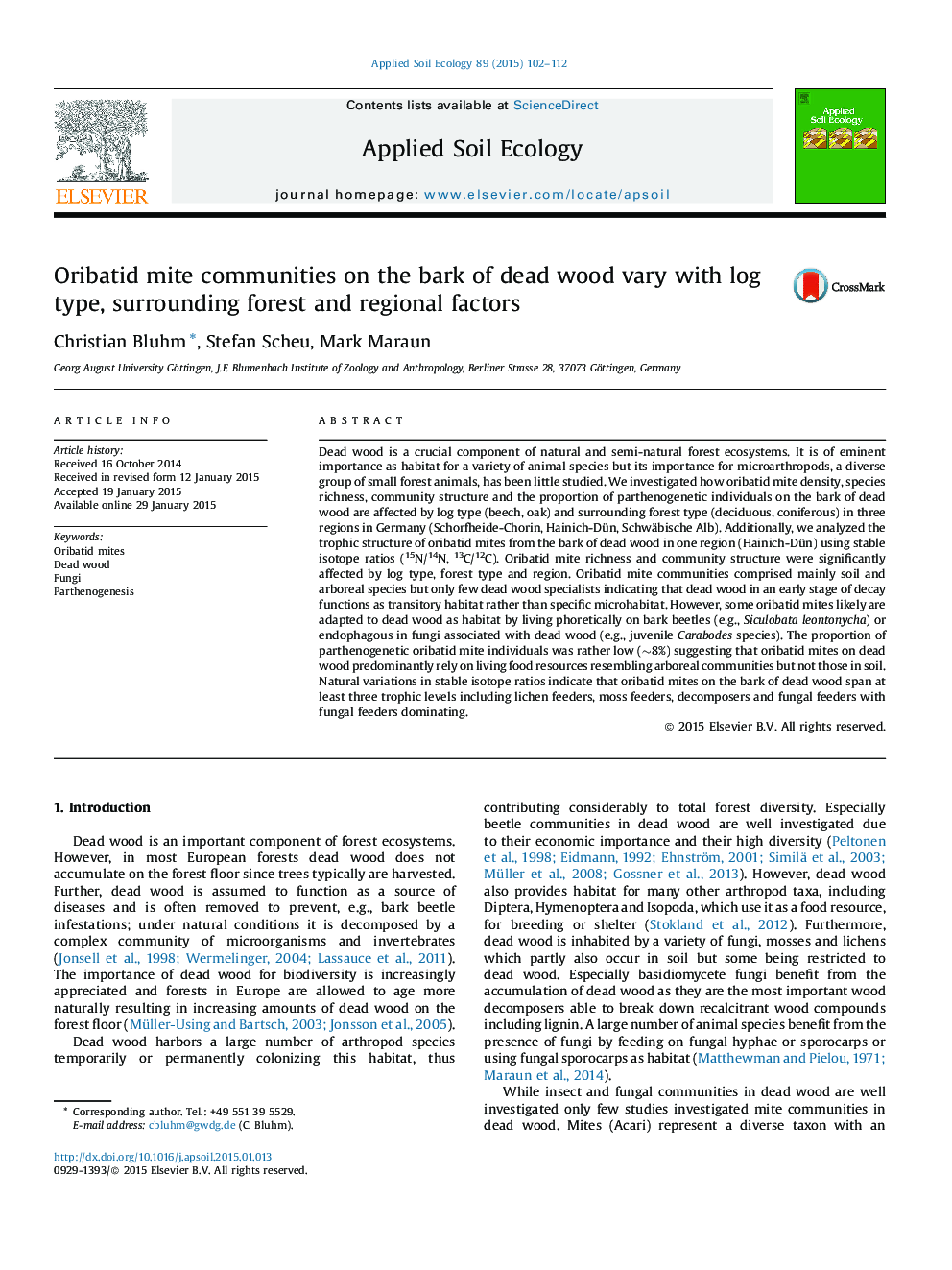| Article ID | Journal | Published Year | Pages | File Type |
|---|---|---|---|---|
| 4382036 | Applied Soil Ecology | 2015 | 11 Pages |
•We investigated oribatid mites in lying dead wood.•We analyzed their trophic structure using stable isotope ratios (15N/14N, 13C/12C).•Oribatid mite communities were affected by log species, surrounding forest and region.•Oribatid mites on logs presumably consumed lichens, mosses, fungi and detritus.•Dead wood functions as transitory rather than specific microhabitat.
Dead wood is a crucial component of natural and semi-natural forest ecosystems. It is of eminent importance as habitat for a variety of animal species but its importance for microarthropods, a diverse group of small forest animals, has been little studied. We investigated how oribatid mite density, species richness, community structure and the proportion of parthenogenetic individuals on the bark of dead wood are affected by log type (beech, oak) and surrounding forest type (deciduous, coniferous) in three regions in Germany (Schorfheide-Chorin, Hainich-Dün, Schwäbische Alb). Additionally, we analyzed the trophic structure of oribatid mites from the bark of dead wood in one region (Hainich-Dün) using stable isotope ratios (15N/14N, 13C/12C). Oribatid mite richness and community structure were significantly affected by log type, forest type and region. Oribatid mite communities comprised mainly soil and arboreal species but only few dead wood specialists indicating that dead wood in an early stage of decay functions as transitory habitat rather than specific microhabitat. However, some oribatid mites likely are adapted to dead wood as habitat by living phoretically on bark beetles (e.g., Siculobata leontonycha) or endophagous in fungi associated with dead wood (e.g., juvenile Carabodes species). The proportion of parthenogenetic oribatid mite individuals was rather low (∼8%) suggesting that oribatid mites on dead wood predominantly rely on living food resources resembling arboreal communities but not those in soil. Natural variations in stable isotope ratios indicate that oribatid mites on the bark of dead wood span at least three trophic levels including lichen feeders, moss feeders, decomposers and fungal feeders with fungal feeders dominating.
